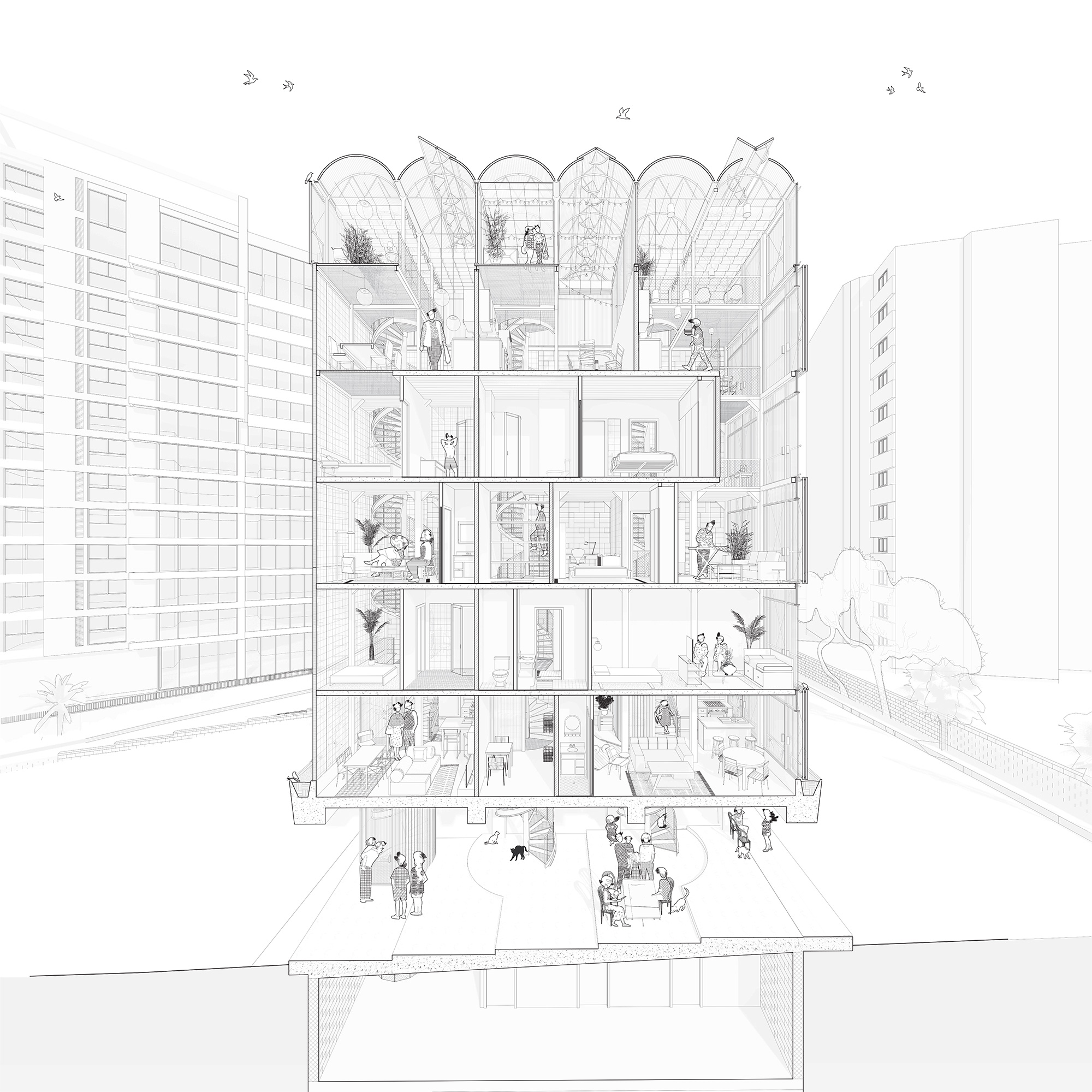08.07.20 - Carol Moukheiber publishes a book of potential uses for Beirut's vacant lots
In 2017, assistant professor Carol Moukheiber was in Lebanon, teaching at the American University of Beirut. She and a Beirut-based colleague, AUB instructor Rana Samara Jubayli, were struck by the way the city's approach to planning left certain parts of its urban fabric looking threadbare.
Beirut's zoning rules mandate that plots of land be a certain minimum size in order to be developed into tall buildings. Privately owned lots that aren't large enough for development tend to remain vacant for long periods of time. "These lots are noticeable when you're in Beirut," Moukheiber says. "There are all these gaps. They're sometimes interesting places where informal activities take place, but a lot of times they're places where people are just dumping things. Sometimes they add to public life, but sometimes they do the opposite."
That observation became the basis for a 2019 research studio, in which third-year Daniels Faculty graduate students, under Moukheiber's supervision, collaborated with AUB students studying under Samara Jubayli and guest professor Christos Marcopoulos (who previously taught at the Daniels Faculty).
Over the course of the semester, students at both universities worked to design architectural solutions to the problem of Beirut's underutilized lots. Moukheiber and her colleagues at the AUB have now collected some of those designs in a new book, titled Inhabiting Invisible Plots.


Top: Infill lot typologies in Beirut. Bottom: A map of land use in Beirut. Both images taken from Inhabiting Invisible Plots.
A print edition is in the works, but for now the book can be read in its entirety online.
The principal aim of the research studio was to find ways of using Beirut's small, undeveloped lots to address the city's housing affordability crisis. Students were tasked with developing new types of collective housing that could exist on oddly shaped bits of vacant land — but without sacrificing life essentials like privacy, access to air and light, and access to common areas.
The book details the research conducted by the studio's participants. Daniels Faculty students did an intensive study of architectural precedents, in order to gain a sense of how other cities around the world have developed collective housing. At the AUB, meanwhile, students analyzed and mapped Beirut's infill lots. At one point in the semester, Moukheiber took her students on a class trip to Lebanon (this was pre-COVID, and before the onset of Lebanon's recent economic and political crisis), where they met their AUB counterparts in person.
The book concludes with a selection of architectural designs by students at both universities. Each design is a distinct response to the studio's design prompt, tailored to fit an actual vacant lot located somewhere in Beirut.

Section of Linnea Coveney's "tall row."
Daniels student Linnea Coveney designed a new housing type she called a "tall row" — essentially an extra-tall row house complex, designed to fit three households onto a narrow lot. The housing units are placed side-by-side in such a way that all of them have ground-level access and city views. The structure is topped with a greenhouse, which Coveney designed to be reminiscent of a Babylonian hanging garden. All three units share a central guest bedroom — an innovative touch of collectivity.
Coveney's design is just one of 18 student projects included in Inhabiting Invisible Plots. Eight are by Daniels students, and the other 10 are by students of the AUB.

